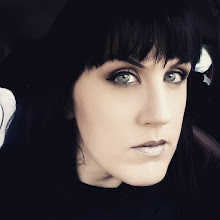
Originally I was going to do Watchmen for W, but I couldn't be bothered with the inevitable comparisons to the comic, so I decided to settle for The Woman in Black instead. It was one of my favourite films of 2012 (I reviewed it here on my film blog), and it was nice to see Hammer back in such period style. After all, they really made their name with lush period Gothic horrors in the late 1950s and 1960s, so it makes sense that they'd revisit what they know for this gorgeous adaptation of Susan Hill's 1983 novel of the same name.
I read the novel a while ago, and I'm due to see the stage version in May, and I was a little apprehensive about seeing the film. Adaptations can pretty much go either way, and be better than the source text, or suck beyond all logical reason. For The Woman in Black, I wouldn't say it's better than the source text, it just tells the story differently. Being a film and not a novel, it has the luxury of being able to do this - some scenes naturally work better when viewed rather than read. The trailer was a strange one though, and seemed to imply the sorts of CGI shenanigans which made the 1999 remake of The Haunting so abysmal. The Woman in Black falls under the Radcliffean mode of the Gothic, in that events are implied but not directly shown, and I was worried that Hammer had gone the other way, for the grand guignol school of the Gothic, and had turned the story into a special effects bonanza. I was also curious about the casting - could Daniel Radcliffe really carry a film?
The answer, in my humble opinion, is yes. Radcliffe plays Arthur Kipps, a London solicitor struggling to cope with the loss of his wife during childbirth. He's given one last chance to redeem himself with his employer, and he leaves his young son with his nanny while he heads to Eel Marsh House in the remote village of Cryphin Gifford to sort out the paperwork left behind by Alice Drablow. The villagers are a peculiar sort, gripped by a fear of the mysterious Woman in Black, and Arthur's presence does nothing to allay their fears. After he begins to see her, children in the village begin to die in horrible ways, egged on by the Woman. Can Arthur work out who she is and what she wants before his son arrives with his nanny?
Radcliffe is marvellous as the lead - I was worried he might be too young to convincingly portray a widower with a son, but he pulls it off. He carries most of the film, pretty much acting alongside the looming bulk of Eel Marsh House, but his scenes with Ciaran Hinds, who plays a local landowner, demonstrate how much Radcliffe has grown as an actor since his first wobbling steps in Harry Potter & The Philosopher's Stone twelve years ago. Credit must also go to Kave Quinn's production design, as well as the art direction of Paul Ghirardani and Kate Grimble, and the set dressing of Niamh Coulter - The Woman in Black is a gorgeous film, and perfectly captures both the cluttered aesthetic of Victorian décor, as well as the brooding spaces of a Gothic ghost story.
Some of the reviews describe The Woman in Black as being slow, or having a "crawling pace", and I think this in part reveals a problem with modern filmmaking. We're used to things being thrown out of the screen at us, or having either a scene of exposition every five minutes - anything that takes time to establish a mood, or mount a growing sense of trepidation, is viewed as being slow. It's a more naturalistic way of telling a story, unspooling it as the protagonist searches for answers - in the Google era, we're too used to finding information at a click of a button. Instead, I'd say that The Woman in Black reaches a certain level of creepiness, and while I didn't find it scary (unlike the people screaming in the cinema when I went to see it), I did find it unsettling. To me, that is the mark of a good ghost story...
Here's a scene from near the end of the film, as Arthur tries to lure out the Woman in Black.








